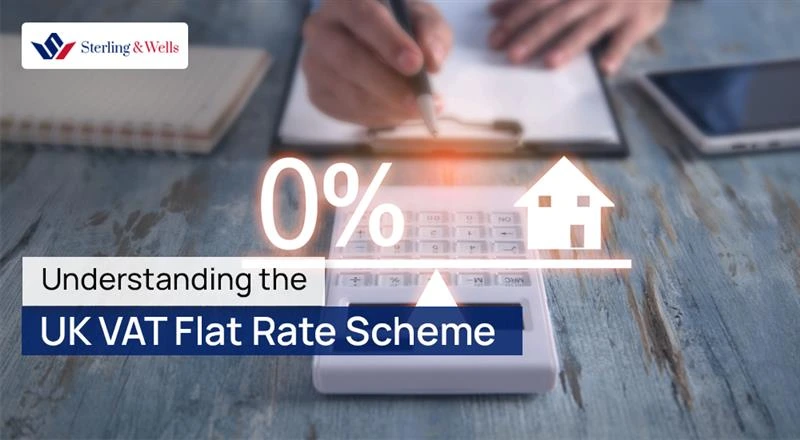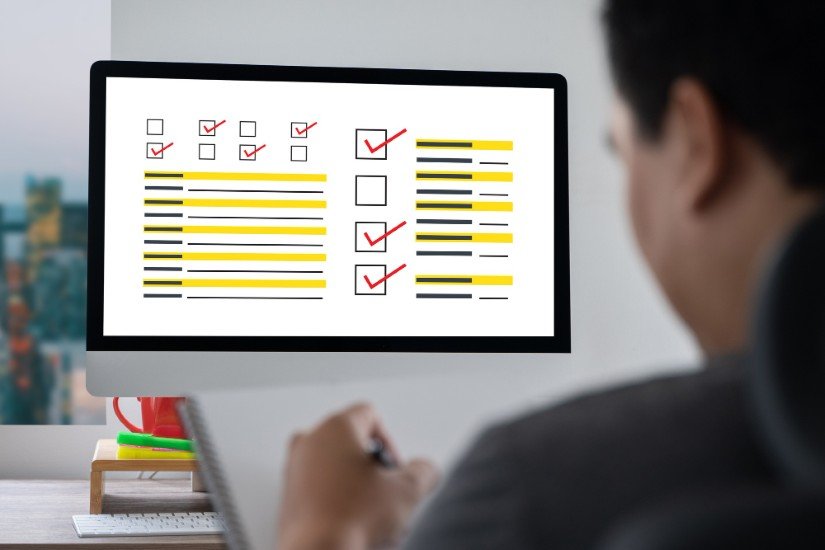Understanding the UK VAT Flat Rate Scheme

The UK VAT Flat Rate Scheme (FRS) is a simplified VAT accounting method designed to ease the administrative burden on small businesses. Introduced by HM Revenue & Customs (HMRC), the UK VAT flat rate scheme allows eligible businesses to calculate their VAT payments as a fixed percentage of their gross turnover.
This guide provides an in-depth overview of the Flat Rate Scheme, including eligibility criteria, benefits, limitations, sector-specific rates, and practical examples to help you determine if the scheme is suitable for your business.
What is the VAT Flat Rate Scheme?
Under the standard VAT accounting method, businesses charge VAT on their sales (output tax) and reclaim VAT on their purchases (input tax). This requires detailed record-keeping of all VAT transactions.
The Flat Rate Scheme simplifies this process by allowing businesses to apply a fixed flat rate percentage to their VAT-inclusive turnover to determine the VAT due to HMRC. One of the key features of the scheme is that businesses still charge VAT at the standard rate (usually 20%) on their invoices, but they pay HMRC a lower, fixed percentage of their gross sales. The difference is kept by the business, which is intended to cover the input VAT on purchases. However, under this scheme, businesses generally cannot reclaim VAT on most purchases except for certain capital assets over £2,000.
Input Tax and Capital Expenditure
Generally, businesses on the Flat Rate Scheme cannot reclaim input VAT on purchases. However, you can reclaim VAT on a single purchase of capital expenditure goods costing £2,000 or more (including VAT), provided the goods are not:
-
For resale
-
Incorporated into other goods for onward supply
-
Consumed within one year
-
Used to generate income by being leased, let, or hired
Example
A business purchases a computer for £2,400 (including £400 VAT). Since the computer is a capital expenditure item and meets the criteria, the business can reclaim the £400 VAT.
VAT Flat Rate Scheme Eligibility Criteria
To join the Flat Rate Scheme, your business must satisfy several key conditions set by HMRC. These criteria are designed to ensure the scheme is used by small businesses that can benefit most from its simplified VAT reporting process.

The VAT Flat Rate Scheme eligibility includes several conditions relating to registration status, turnover limits, business associations, and applicable VAT schemes, as outlined below:
VAT Registration
Your business must be registered for VAT with HMRC before you can apply for the Flat Rate Scheme. This means you either:
-
Have reached the VAT registration threshold (currently £90,000 in taxable turnover), or
-
Have chosen to register voluntarily.
Only VAT-registered businesses are eligible because the scheme is an alternative method of calculating and reporting VAT, it does not exempt you from VAT obligations.
Annual Taxable Turnover
Your taxable turnover (excluding VAT) must not exceed £150,000 in the next 12 months. This refers to the expected income from all VAT-taxable sales and services, whether standard, reduced, or zero-rated but it excludes exempt sales and sales outside the scope of VAT.
If your projected turnover exceeds this limit, you’re not eligible to join. The scheme is targeted at smaller businesses, so exceeding this threshold suggests you’re better suited to the standard VAT accounting method.
No Recent Participation in the Flat Rate Scheme
You must not have left the Flat Rate Scheme within the last 12 months. HMRC enforces this rule to prevent businesses from joining and leaving the scheme repeatedly, potentially for tax advantage or avoidance purposes.
If you voluntarily left the scheme or were removed by HMRC in the last year, you must wait at least 12 months before reapplying. This ensures stability and proper use of the scheme.
No Association with other Businesses
Your business must not be closely associated with another business. This typically refers to situations where:
-
Two or more businesses share the same ownership or control,
-
They operate from the same premises,
-
They have overlapping management or staff.
HMRC considers such associations a potential risk for VAT manipulation or fragmentation of activities to stay under the turnover threshold. If your business is deemed to be closely linked with another, you may be barred from joining the scheme.
Certain Businesses are Excluded
Some types of businesses are explicitly excluded from using the Flat Rate Scheme due to the nature of their VAT treatment. These include:
-
Businesses using margin schemes
Such as second-hand goods, art, antiques, and collectibles. Margin schemes calculate VAT based on the profit margin, not the total selling price, which is incompatible with FRS.
-
Tour Operator’s Margin Scheme (TOMS)
This special VAT accounting method applies to travel companies and is not compatible with the flat rate approach.
-
Businesses required to use the Capital Goods Scheme (CGS)
If you own capital items like land or buildings worth £50,000 or more (excluding VAT), and you're required to make VAT adjustments over time using CGS, you are ineligible for the Flat Rate Scheme.
These exclusions help maintain the integrity of VAT accounting where more complex or sector-specific rules are required.
Not sure if the VAT Flat Rate Scheme will save you money?
Our expert accountants will run the numbers for you — get a VAT review today with 15-minutes Free Discovery Call.
How to Join the Flat Rate Scheme
Businesses wishing to take advantage of the Flat Rate Scheme must first understand the application process. The following section outlines how to join the scheme in the UK:
Online Registration
To join the scheme, you can register for VAT online. This is a convenient way to initiate the process.
Submitting the VAT600 FRS Form
In addition to registering online, you can also complete the VAT600 FRS form. This form is available from HMRC directly or can be downloaded from their official website. After completion of the VAT600 FRS form, you can either email it to frsapplications.vrs@hmrc.gov.uk or send it by post. Note that the address for sending the form is different from the one provided on the form itself. Send it to: BT VAT HM Revenue and Customs BX9 1WR.
Consider the Annual Accounting Scheme
If you are interested in both the Flat Rate Scheme and the Annual Accounting Scheme, you can use the VAT600 AA/FRS form to apply for both simultaneously.
Confirmation of Enrolment
After your application has been reviewed and accepted, HMRC will confirm your enrolment in the Flat Rate Scheme. You’ll receive this confirmation via your VAT online account or by post, depending on how you submitted your application.
Determining Your Flat Rate Scheme Percentages
Determining the correct flat rate percentage is essential, as it directly affects the VAT you pay to HMRC.

- Accountancy and Bookkeeping: 14.5%
- Computer and IT Consultancy: 14.5%
- Catering Services: 12.5%
Limited Cost Businesses
Introduced on 1 April 2017, the limited cost business rate was brought in by HMRC to ensure that the Flat Rate Scheme is used appropriately, particularly by businesses that have very low spending on goods. This measure prevents such businesses from gaining a disproportionate financial advantage under the scheme.
If your business is considered a limited cost trader, you are required to apply a higher flat rate of 16.5% to your VAT-inclusive turnover regardless of your sector’s usual flat rate.
You are classed as a limited cost business if either:
-
Your expenditure on relevant goods is less than 2% of your VAT-inclusive turnover for the accounting period, or
-
Your spending on relevant goods is more than 2%, but less than £1,000 per year (or the relevant proportion if using quarterly returns).
This means even if you meet the 2% threshold, you could still be classified as a limited cost business if your annual goods expenditure is under £1,000.
What are “relevant goods”?
Relevant goods are tangible items used exclusively for business purposes. Examples include:
- Stationery and office supplies
- Raw materials used in production
- Gas or electricity used in the business
They do not include:
- Capital goods (e.g. laptops or machinery)
- Food and drink for you or your staff
- Vehicles and fuel
- Goods for resale unless they are part of your normal business activity
HMRC provides strict guidance on what counts as relevant goods to prevent abuse of the scheme.
Example 1:
A business has a VAT-inclusive turnover of £20,000 per quarter and spends £300 on relevant goods in the same period.
- 2% of £20,000 = £400
- Since £300 is less than £400, the business falls under the limited cost business rules.
As a result, the business must apply the 16.5% flat rate, regardless of its actual sector rate.
Example 2:
A business has a flat rate turnover of £11,000 for the quarter and spends £300 on relevant goods during the same period.
To determine whether the 16.5% limited cost business rate applies, both HMRC conditions must be checked:
- 2% of £11,000 is £220. The business spends £300, which is more than 2% of its VAT-inclusive turnover.
- The quarterly threshold equivalent of £1,000 per year is £250 (£1000/4). The business spends £300, which is also more than this amount.
Since the business meets both conditions, it is not classed as a limited cost trader and can apply the sector rate relevant to its main business activity.
Flat Rate Scheme (FRS) Calculation

To calculate VAT due under the Flat Rate Scheme, follow these steps:
Step 1: Determine VAT-inclusive Turnover
This includes all VAT-inclusive sales made during the VAT period. You must include Standard-rated, reduced-rated, and zero-rated supplies but you cannot use the exempt supplies and supplies which is outside the scope of UK VAT.
Step 2: Identify the Applicable Flat Rate Percentage
Use the flat rate percentage assigned to your sector, as provided by HMRC.
Step 3: Apply the Flat Rate to Your Gross Turnover
Multiply your total VAT-inclusive turnover by the flat rate percentage to calculate the VAT you owe to HMRC.
Example
Suppose a graphic design business has a VAT-inclusive turnover of £12,000 in a VAT quarter. This includes all invoices issued to clients, including VAT. The business typically incurs input VAT on expenses such as software subscriptions, office supplies, and internet services.
- Flat Rate Turnover: £12,000 (VAT-inclusive)
- Flat Rate Percentage for Graphic Design Services: 14.5%
- VAT Due to HMRC: £12,000 × 14.5% = £1,740
Note:
- Under FRS, the business does not reclaim input VAT on purchases, except in limited cases (e.g. certain capital assets over £2,000).
- The calculation is simplified and does not require detailed VAT tracking on each expense.
If they have used the Standard VAT Accounting, then:
- Net Sales (excluding VAT): £10,000
- Output VAT (20% on £10,000): £2,000
- Gross Turnover: £12,000
- Input VAT on expenses: Assume the business incurred £400 of input VAT on allowable purchases during the quarter
- VAT Due to HMRC: Output VAT (£2,000) – Input VAT (£400) = £1,600
Note: The Flat Rate Scheme results in higher VAT payable (£1,740 vs. £1,600). However, some small businesses still choose the scheme for its ease of use, time savings, and reduced bookkeeping requirements especially if input VAT is minimal or irregular.
Benefits of the Flat Rate Scheme
The Flat Rate Scheme offers several practical advantages, especially for small businesses with straightforward operations. By simplifying VAT calculations and reducing paperwork, the scheme can improve efficiency and free up valuable time.
Simplified Record-Keeping
Businesses are not required to record the VAT paid on each individual purchase. Instead, they simply apply a fixed percentage to their gross turnover. This reduces the burden of maintaining detailed VAT records and simplifies VAT return preparation.
Predictable VAT Payments
Using a consistent flat rate percentage allows businesses to estimate their VAT liability with greater accuracy. This predictability aids in budgeting and financial planning, as there are fewer surprises at the end of each VAT period.
Improved Cash Flow Management
For businesses with relatively low input costs, the Flat Rate Scheme can result in lower overall VAT payments than under standard VAT accounting. This may lead to better cash retention, helping businesses to reinvest in growth or manage working capital more effectively.
Reduced Risk of Errors
Since the scheme removes the need to calculate VAT on each individual sale and purchase, there is less scope for manual mistakes or incorrect VAT treatment reducing the risk of penalties or HMRC enquiries.
Leaving the Flat Rate Scheme
There are several circumstances under which a business must or may choose to leave the Flat Rate Scheme. Below is an overview of when and how to exit the scheme:
- Loss of Eligibility
If your business, no longer meets the qualifying criteria such as changes in business structure or sector you are required to leave the scheme.
- Turnover Threshold Breach
You must exit the scheme if your VAT-inclusive turnover exceeds £230,000 either:
- On the anniversary of joining, based on the previous 12 months, or
- At any point you reasonably expect your turnover to exceed this threshold in the next 12 months.
- Forecasted Increase in Income (30-Day Rule)
If you expect your total VAT-inclusive income to exceed £230,000 within the next 30 days alone, this also triggers a compulsory exit from the scheme.
- Voluntary Withdrawal
You are free to leave the Flat Rate Scheme at any time, even if you still meet the eligibility conditions. This may be beneficial if your input VAT has increased, or the flat rate is no longer favourable.
- Notifying HMRC
To formally leave the scheme, you must write to HMRC and inform them of your decision. HMRC will then confirm your official leaving date in writing.
- Rejoining Restrictions
If you leave the scheme voluntarily or due to ineligibility, you cannot rejoin for at least 12 months. This restriction applies even if you later become eligible again.
- Where to Send Your Leaving Request
Your written request to leave the scheme should be sent to HMRC at the designated VAT correspondence address: VAT HM Revenue and Customs, BX9 1WR. Ensure the letter includes your VAT registration number, business name, and reason for leaving.
Conclusion
The UK VAT Flat Rate Scheme is designed to make VAT accounting easier for small businesses by applying a fixed percentage to their VAT-inclusive turnover. It can simplify bookkeeping, reduce the need for detailed VAT records on purchases, and even offer financial advantages when business expenses are low. For many small businesses, this straightforward method helps save time and provides more predictable VAT payments.
However, the scheme isn’t suitable for everyone. Businesses with higher input VAT costs or those classified as “limited cost businesses” may end up paying more under this scheme than they would using standard VAT accounting. It’s important to weigh the benefits against the restrictions and do the maths based on your turnover, expenses, and business sector before making a decision. Choosing the right VAT scheme can have a real impact on your cash flow and tax efficiency.
Sterling & Wells
We are Sterling & Wells — a UK-based team of accountants and tax advisors helping individuals and businesses stay fully HMRC compliant. From VAT and bookkeeping to self-assessments and tax planning, we’ve got your finances covered.